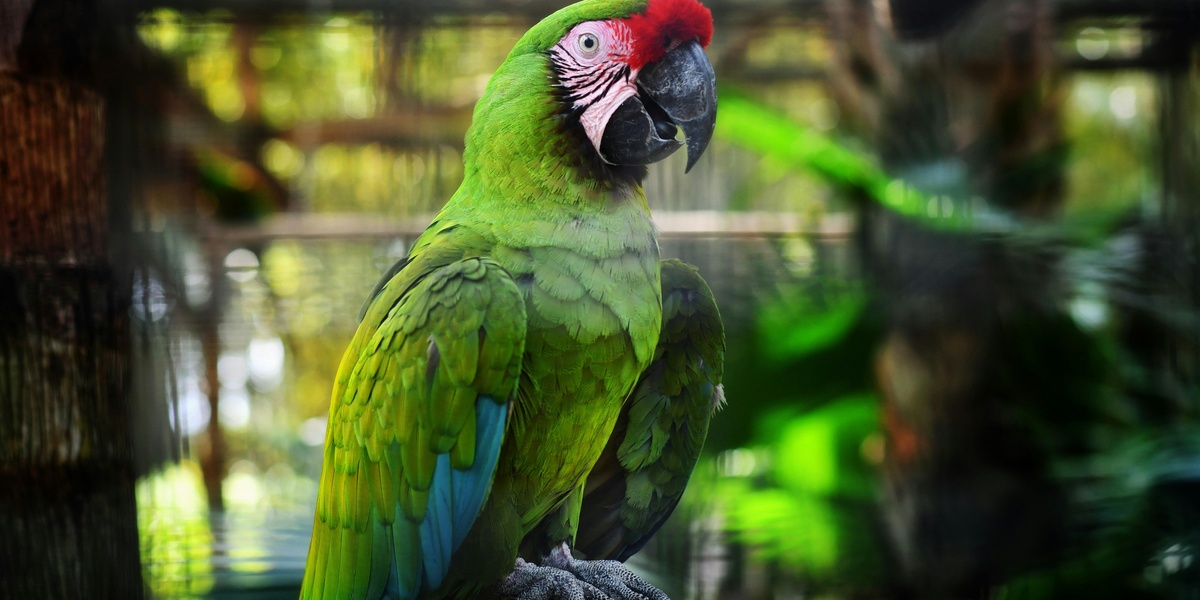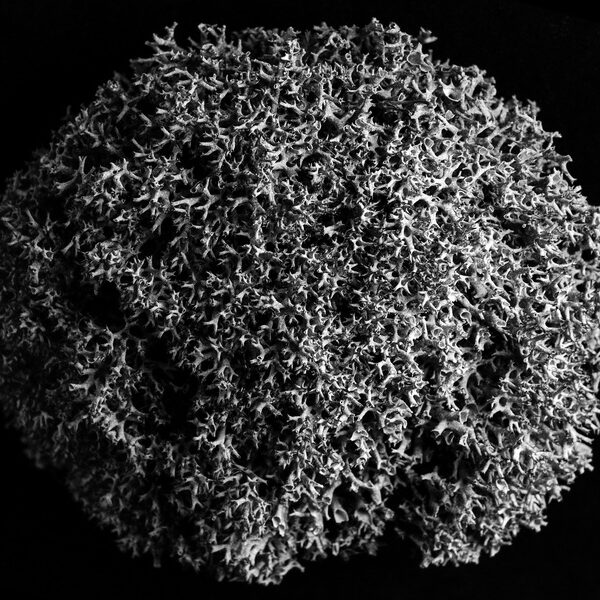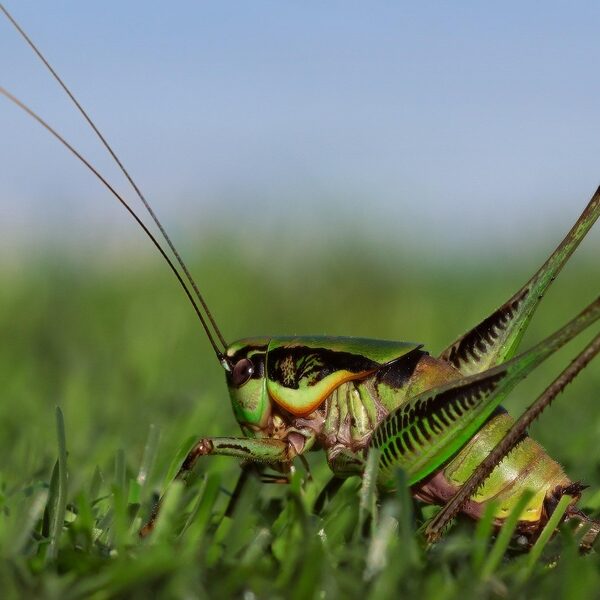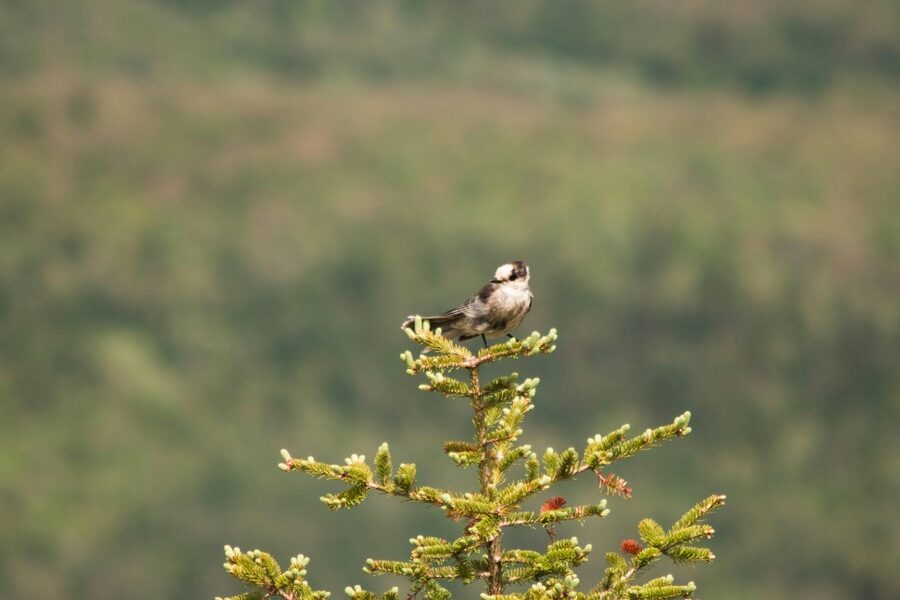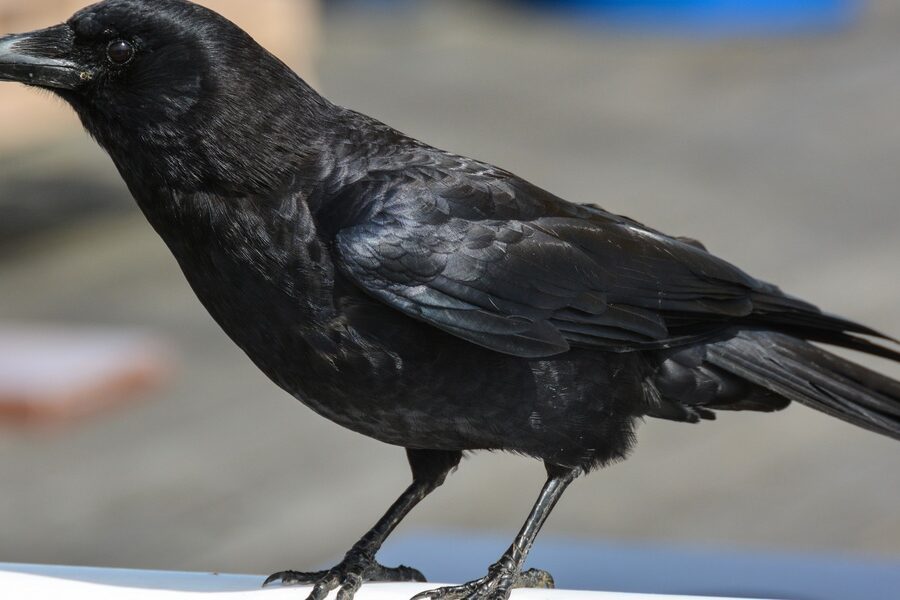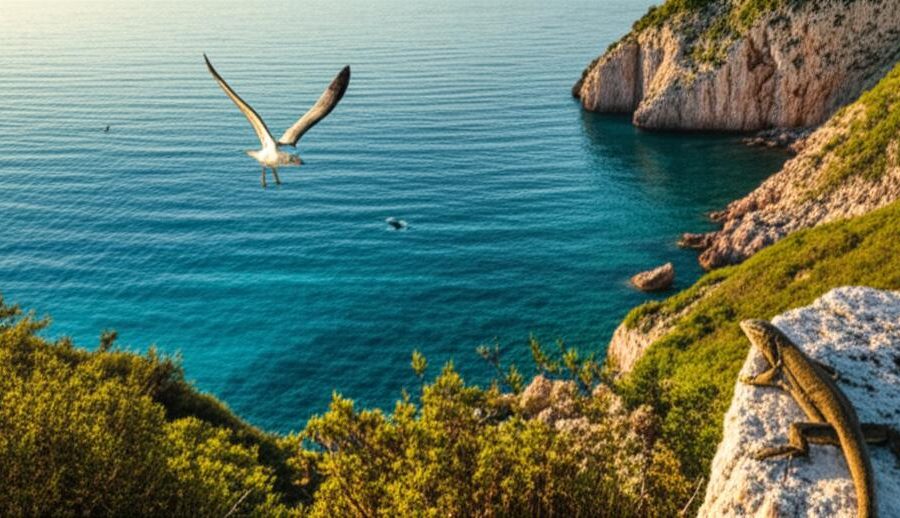The islands of Saint Vincent and the Grenadines combine volcanic highlands, mangroves, and offshore cays that support a wide mix of landbirds, seabirds, and seasonal visitors. Habitats change quickly between valleys and coast, so short walks or boat trips can turn up very different species in one day.
There are 45 Birds of Saint Vincent and the Grenadines, ranging from American Kestrel to Zenaida Dove. For each species, entries are organized by the columns Scientific name, Status, and Where seen to help with identification and locating sightings you’ll find below.
When is the best time to go birding in Saint Vincent and the Grenadines?
The dry season (roughly December–April) usually offers easier access to trails and more visible landbird activity, while certain migratory and seabird species peak at other times; use the “Where seen” notes to target specific islands or coastal sites.
How should I interpret the “Status” column when planning a trip?
“Status” typically indicates whether a species is resident, breeding, migrant, accidental, endemic, or introduced, so check that column to know how likely you are to encounter a bird and whether special habitats or seasons matter.
Birds of Saint Vincent and the Grenadines
| Common name | Scientific name | Status | Where seen |
|---|---|---|---|
| St. Vincent Amazon | Amazona guildingii | endemic | St. Vincent—montane and cloud forest reserves |
| Brown Pelican | Pelecanus occidentalis | resident | coastal waters, harbors, beaches of all main islands |
| Magnificent Frigatebird | Fregata magnificens | resident | offshore cays (Tobago Cays), coastal roosts and lagoons |
| Brown Booby | Sula leucogaster | resident | offshore rocks and cays (Tobago Cays), coastal cliffs |
| White-tailed Tropicbird | Phaethon lepturus | resident | sea cliffs and offshore islets, Tobago Cays |
| Sooty Tern | Onychoprion fuscatus | resident | breeding colonies on remote cays (Tobago Cays) |
| Bridled Tern | Onychoprion anaethetus | resident | reefs and offshore islets, nesting on rocky ledges |
| Brown Noddy | Anous stolidus | resident | offshore cays and cliff ledges, Tobago Cays |
| Laughing Gull | Leucophaeus atricilla | resident | beaches, harbors, coastal villages throughout islands |
| Royal Tern | Thalasseus maximus | migrant | sandy beaches, offshore waters and at sea |
| Least Tern | Sternula antillarum | migrant | sandy beaches, low-lying cays and lagoons |
| Great Blue Heron | Ardea herodias | resident | mangroves, lagoons, salt ponds and coastal wetlands |
| Great Egret | Ardea alba | resident | mangroves, marshes, coastal lagoons and ponds |
| Snowy Egret | Egretta thula | resident | mudflats, mangroves and shorelines |
| Cattle Egret | Bubulcus ibis | resident | pastures, agricultural edges, roadside vegetation |
| Green Heron | Butorides virescens | resident | mangroves, streams, ponds and wetlands |
| Yellow-crowned Night-Heron | Nyctanassa violacea | resident | mangroves, coastal lagoons, tidal creeks and ruin sites |
| Osprey | Pandion haliaetus | resident | coastal waters, estuaries and larger bays around islands |
| American Kestrel | Falco sparverius | resident | open areas, agricultural land, cliffs and roadside perches |
| Peregrine Falcon | Falco peregrinus | accidental/vagrant | coastal cliffs and offshore sightings |
| Turkey Vulture | Cathartes aura | resident | open country, coastal scrub, hills and roadside thermals |
| Scaly-naped Pigeon | Patagioenas squamosa | resident | mature forest on St. Vincent and larger islands |
| Rock Pigeon | Columba livia | introduced | towns, harbors and villages |
| Zenaida Dove | Zenaida aurita | resident | woodland edges, gardens, coastal scrub and plantations |
| Ruddy Quail-Dove | Geotrygon montana | resident | mature forest and deep understory on St. Vincent |
| Smooth-billed Ani | Crotophaga ani | resident | open scrub, pastures, mangrove edges and farmland |
| Bananaquit | Coereba flaveola | resident | gardens, forest edge, scrub and flowering trees on all islands |
| Lesser Antillean Bullfinch | Loxigilla noctis | resident | gardens, scrub, forest edge and agricultural areas |
| Black-faced Grassquit | Tiaris bicolor | resident | grasslands, marsh edges, scrub and roadside verges |
| Carib Grackle | Quiscalus lugubris | resident | coastal villages, mangroves, farmland and urban areas |
| Shiny Cowbird | Molothrus bonariensis | introduced | open areas, edges, gardens and agricultural land |
| House Sparrow | Passer domesticus | introduced | towns, villages and harbors |
| Purple-throated Carib | Eulampis jugularis | resident | flowering trees, gardens and forest edge on main islands |
| Yellow Warbler | Setophaga petechia | migrant | mangroves, wetlands, gardens and scrub during migration and breeding |
| Palm Warbler | Setophaga palmarum | migrant | low scrub, coastal edge and open woodland in winter |
| American Redstart | Setophaga ruticilla | migrant | forest edge, gardens and secondary growth during migration |
| Northern Waterthrush | Parkesia noveboracensis | migrant | wet forests, mangrove creeks and swampy areas during passage |
| Barn Swallow | Hirundo rustica | migrant | open areas, near buildings, harbors and farmland |
| Wilson’s Plover | Charadrius wilsonia | resident | sandy beaches, sandbars and coastal flats |
| Ruddy Turnstone | Arenaria interpres | migrant | rocky shores, breakwaters, reefs and tidal flats |
| Sanderling | Calidris alba | migrant | sandy beaches and exposed tidal flats |
| Whimbrel | Numenius phaeopus | migrant | mudflats, sandy bays and coastal wetlands during passage |
| Lesser Yellowlegs | Tringa flavipes | migrant | tidal flats, ponds, marshes and coastal lagoons |
| Semipalmated Sandpiper | Calidris pusilla | migrant | mudflats, sandy shores and estuaries during migration |
| Masked Booby | Sula dactylatra | accidental/vagrant | occasional offshore sightings and remote islets |
Images and Descriptions
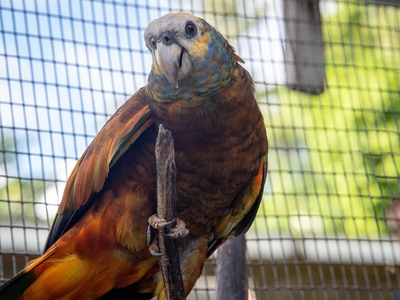
St. Vincent Amazon
Large, green parrot with bright plumage and vocal calls; restricted to higher forest on St. Vincent. Iconic and endangered due to habitat loss and past trapping; conservation programs and protected forests are vital for its survival.
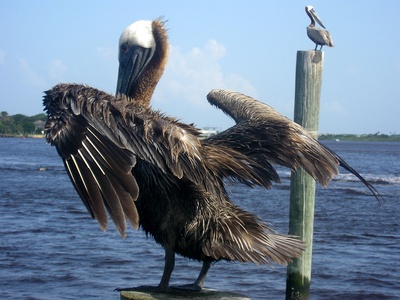
Brown Pelican
Large coastal bird with a long bill and expandable throat pouch; often seen diving for fish or loafing on buoys. Common around fishing boats and beaches, important indicator of coastal health.
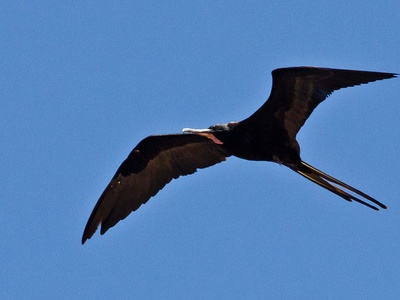
Magnificent Frigatebird
Black, fork-tailed seabird with long wings and males’ red throat pouch. Soars endlessly, snatching fish or harassing other seabirds. Breeds on offshore islets and is conspicuous along coasts.
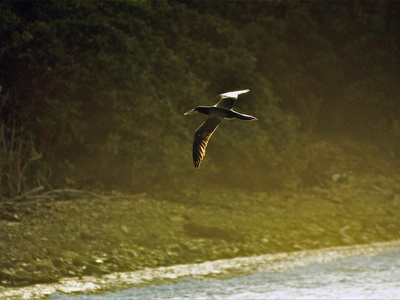
Brown Booby
Stocky diving seabird with brown body and white belly; plunges into the sea for fish. Nests on rocky islets and breeding colonies can be seen on remote cays.
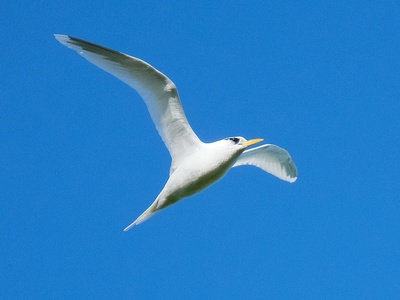
White-tailed Tropicbird
Elegant white seabird with long tail streamers and black facial markings. Nests in cliffs and small islets; often seen singly or in pairs flying above reefs and open water.
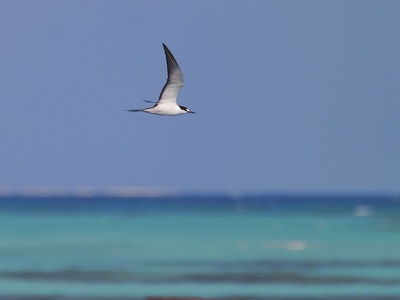
Sooty Tern
Dark-backed tern that nests in dense colonies on offshore cays. Flies low over the sea catching small fish; noisy at colonies and an important seabird of the Grenadines.
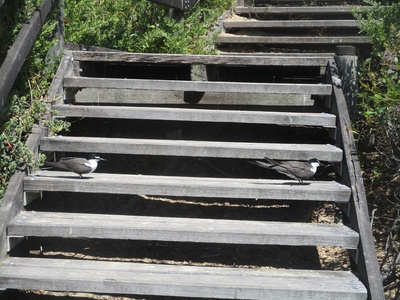
Bridled Tern
Medium tern with distinctive facial pattern; forages over coral reefs and nests on small islets. Often seen in mixed tern flocks around the Tobago Cays.
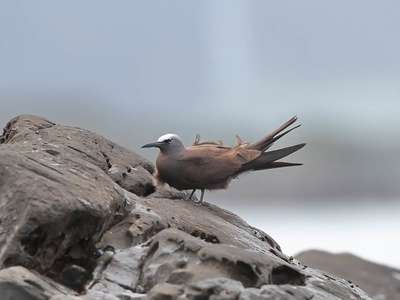
Brown Noddy
Dark, glossy seabird that nests in colonies on small islands and cliffs. Feeds on small fish and squid, often seen perched on low shrubs or flying low over the water.
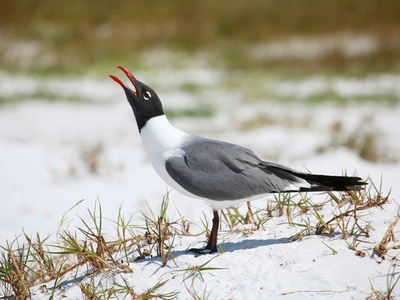
Laughing Gull
Medium gull with black hood in breeding season; scavenges and feeds on fish and invertebrates. Common around towns and beaches, easily recognized by its raucous call.
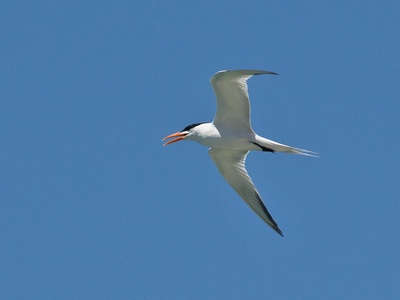
Royal Tern
Large tern with a slender bill and black cap in breeding season; dives for fish and often forms feeding flocks. Seen seasonally along coasts and near sandbars.
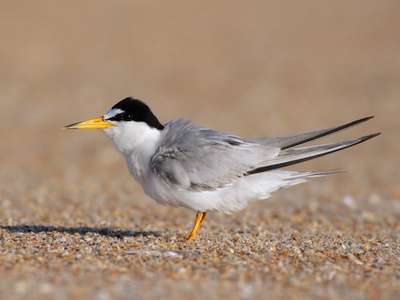
Least Tern
Small, agile tern that nests on open sand and shell beaches. Watchful and easily disturbed; local shorebird watchers look for nesting pairs during calm seasons.
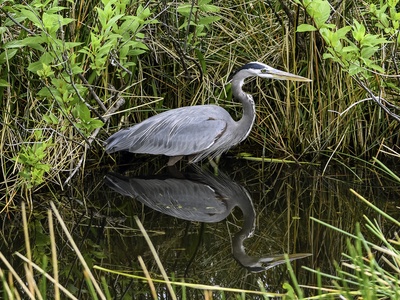
Great Blue Heron
Tall, slate-blue heron with a slow, deliberate hunting style. Stands motionless stalking fish and crustaceans in shallow water; widespread in wetland habitats around the main islands.
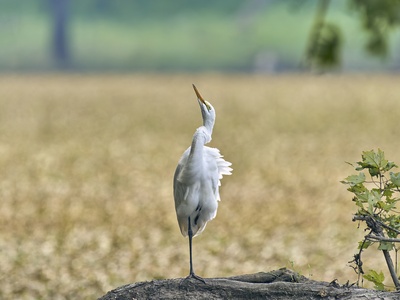
Great Egret
Large white heron with a long neck and yellow bill; hunts in shallow water for fish and invertebrates. Visible in wetlands and mangrove systems across the Grenadines.
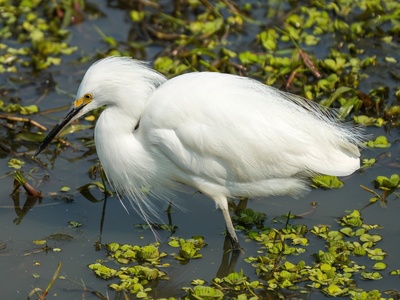
Snowy Egret
Smaller white egret with black bill and yellow feet; active feeder using foot-stirring and quick strikes. Common on tidal flats and near mangrove edges.
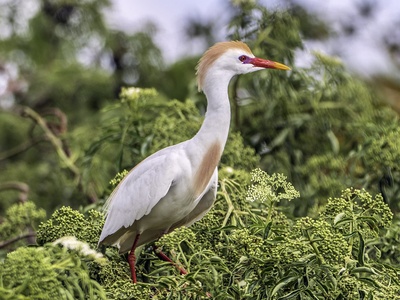
Cattle Egret
Stocky white heron often seen with livestock; feeds on insects disturbed by grazing animals. Widespread in cultivated and open landscapes, frequently encountered near farms and roads.
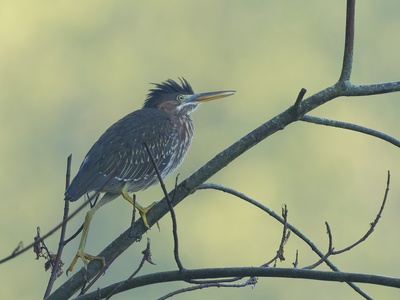
Green Heron
Compact heron with greenish back and chestnut neck; uses stealth and ambush to catch small fish and frogs. Often found at the edges of mangrove creeks and quiet ponds.
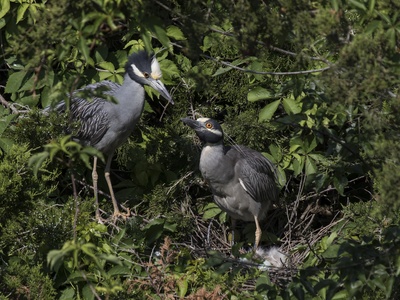
Yellow-crowned Night-Heron
Nocturnal heron that feeds on crabs and small aquatic prey; chunky profile with bold facial pattern. Roosts in mangroves and forages at dusk and night.
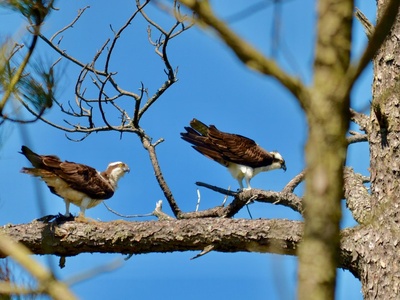
Osprey
Fish-eating raptor with distinctive M-shaped wings in flight; plunges for fish from hovering positions. Seen year-round along coasts, perching on poles and snags near water.
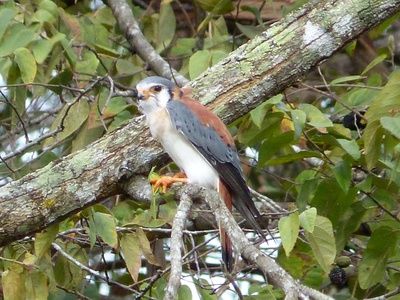
American Kestrel
Small falcon with rufous back and spotted underparts; hovers briefly while hunting insects and small vertebrates. Common in open habitats across the islands.
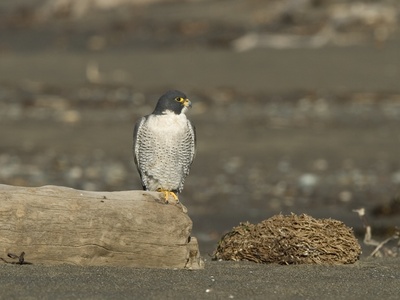
Peregrine Falcon
Powerful, fast falcon occasionally recorded over coasts and cliffs. When seen it draws attention for its dramatic flight and hunting prowess; records are rare and irregular.
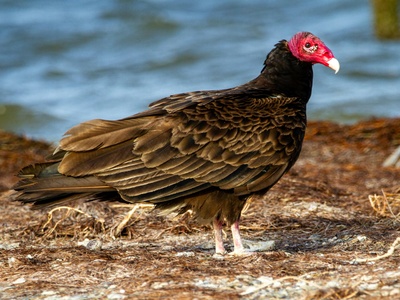
Turkey Vulture
Large scavenger with soaring flight and characteristic V-shaped wings; feeds on carrion. Common and widespread, often seen riding thermals over hills and valleys.
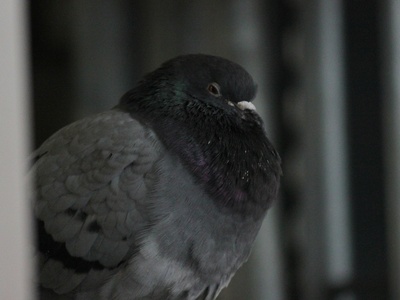
Scaly-naped Pigeon
Large forest pigeon with scaly neck pattern and deep coos; prefers wooded hills and ridge forests. Less common near shorelines, more often heard than seen high in canopy.
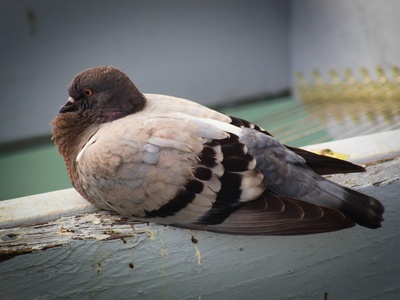
Rock Pigeon
Familiar urban pigeon introduced worldwide; thrives around ports and settlements. Common in towns and around boats and buildings, often forming flocks in harbors.
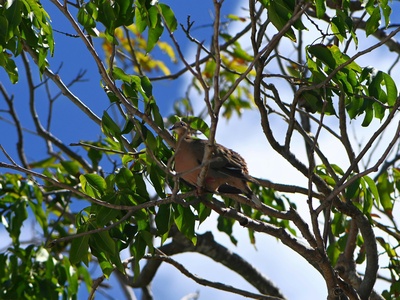
Zenaida Dove
Medium dove with soft cooing and subtle plumage; frequents open woodlands and gardens. Widespread and noticeable by its gentle calls throughout the islands.
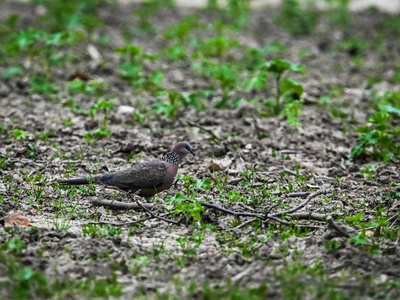
Ruddy Quail-Dove
Secretive ground-dwelling dove with reddish-brown plumage; prefers dense forest floor and is often difficult to see. Presence indicates intact mature forest habitat.
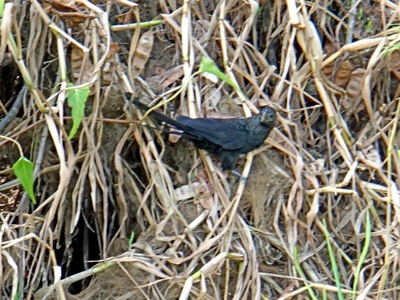
Smooth-billed Ani
Long-tailed black bird with distinctive casque on bill; social and often seen in small groups. Eats insects and small vertebrates, common in open, disturbed habitats.
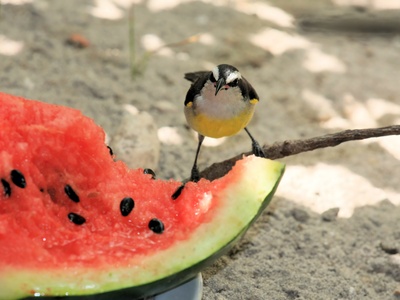
Bananaquit
Small, active nectar- and insect-eating bird with a curved bill and bright plumage. Very common at feeders and flowers, easily recognized by its behavior and high-pitched calls.
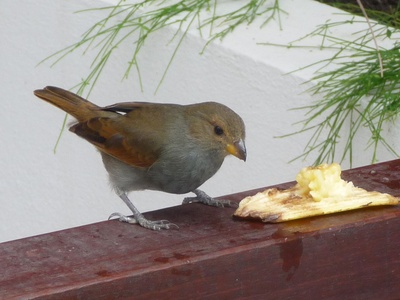
Lesser Antillean Bullfinch
Stout finch with subdued coloration on males and streaked female; feeds on seeds and fruits. Widespread and common across islands, adaptable to human-modified habitats.
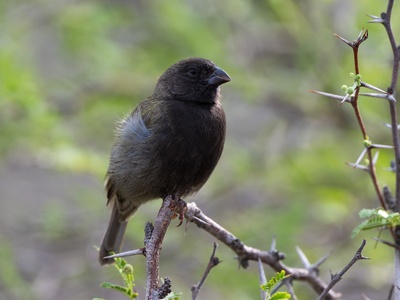
Black-faced Grassquit
Tiny sparrow-like bird with a short conical bill; males show distinctive dark face. Often seen in small flocks feeding on grass seeds along edges and open areas.
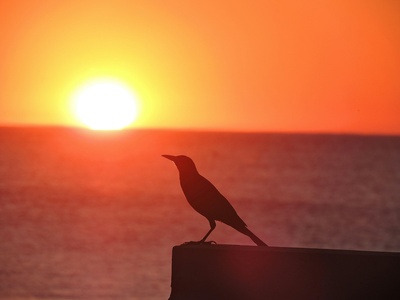
Carib Grackle
Glossy black passerine with long tail and raucous calls; highly social and common near human habitation. Opportunistic feeder, often seen in flocks around markets and shorelines.
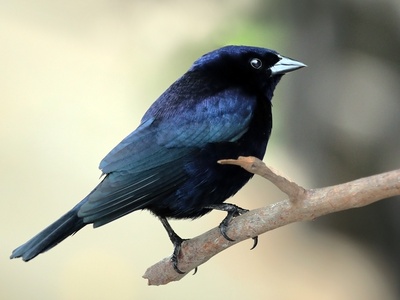
Shiny Cowbird
Small parasitic blackbird that lays eggs in other birds’ nests; has spread widely in the Caribbean. Common in disturbed and agricultural habitats, often near livestock.
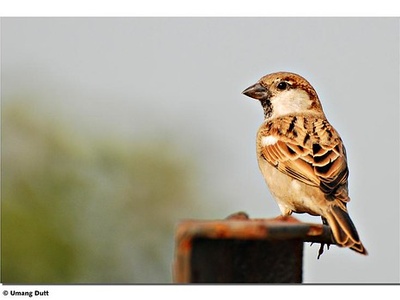
House Sparrow
Small, familiar urban bird introduced from Eurasia; thrives in close association with humans. Common around buildings, markets and ports, nesting in crevices and rooflines.
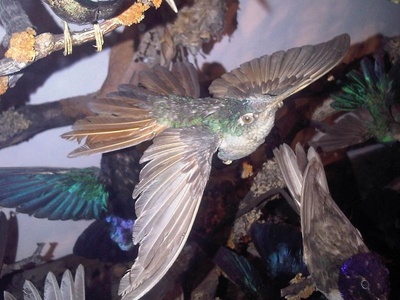
Purple-throated Carib
Slender hummingbird with iridescent throat in males; aggressively defends nectar sources. Frequent visitor to gardens and forest clearings, adding bright color and fast flight displays.
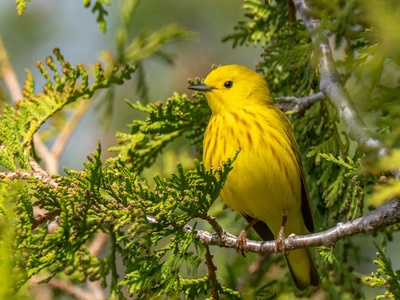
Yellow Warbler
Bright yellow warbler often seen in shrubs and mangroves; common migrant and sometimes breeder. Loud, sweet song and active foraging behavior make it noticeable in suitable habitats.
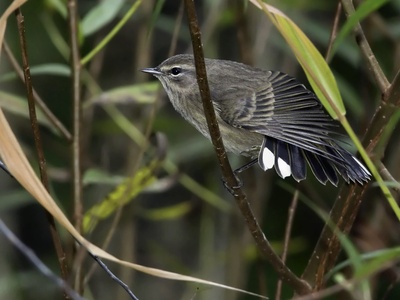
Palm Warbler
Ground-foraging warbler with constant tail-bobbing and streaked underparts; arrives seasonally during migration and winter periods, frequenting open, grassy areas and coastal thickets.
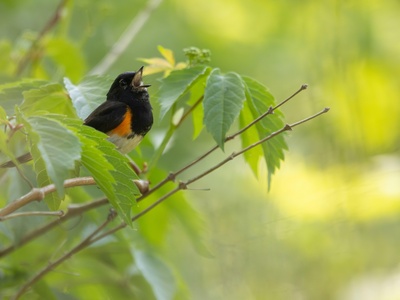
American Redstart
Small, energetic warbler with bold black-and-orange (male) or olive-and-yellow (female) plumage. Actively flits among foliage catching insects; a regular migrant through the islands.
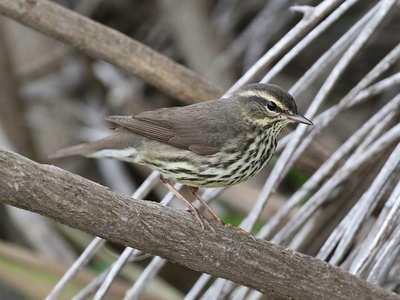
Northern Waterthrush
Streaked, ground-feeding warbler that favors damp, shaded habitats. Often walks steadily while probing leaf litter for insects during migration and winter months.
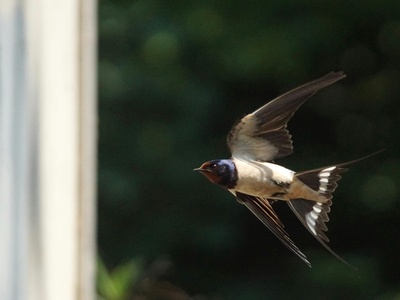
Barn Swallow
Streamlined swallow with forked tail and agile flight; nests on man-made structures. Common migrant and occasional breeder, catching insects over fields and coastal waters.
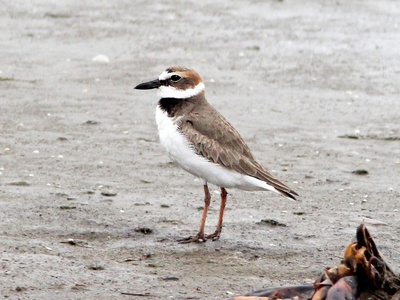
Wilson’s Plover
Chunky plover with large bill and bold face pattern; nests on open sand and feeds on crustaceans. Locally common on undisturbed beaches and sandbars around the Grenadines.
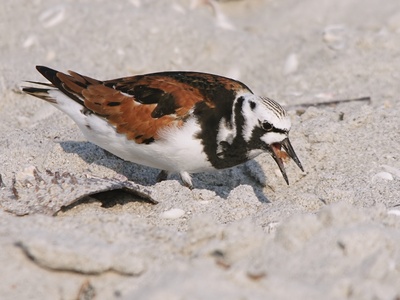
Ruddy Turnstone
Stocky shorebird that flips stones and seaweed to find invertebrates; striking black-and-white breeding pattern. Common winter visitor and regular stopover on rocky coasts.
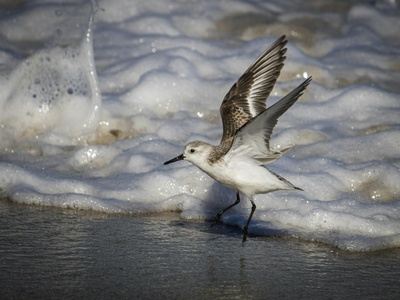
Sanderling
Small, pale sandpiper that runs with waves along shorelines searching for invertebrates. Breeds in the Arctic and is a regular migratory visitor along SVG beaches.
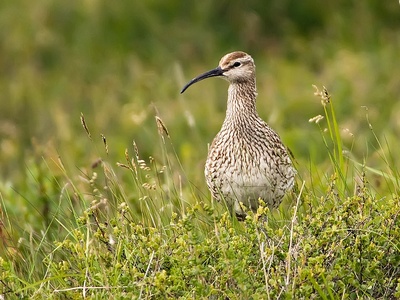
Whimbrel
Large curlew with distinctive downcurved bill and striped head; probes mud for shellfish and crustaceans. Often seen during migration along sheltered coasts.
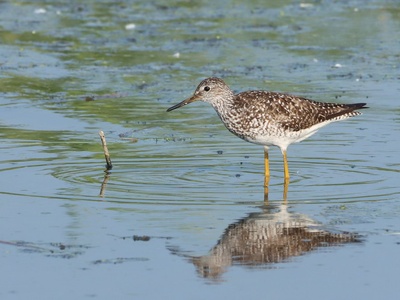
Lesser Yellowlegs
Slender, long-legged shorebird with persistent probing behavior; common migrant in wetland habitats. Often seen among mixed flocks of shorebirds.
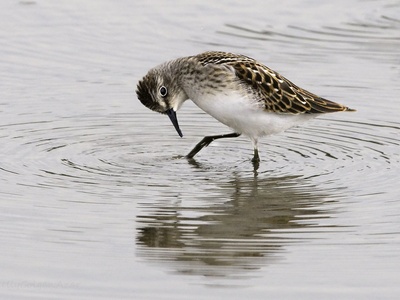
Semipalmated Sandpiper
Tiny, compact sandpiper that feeds rapidly on exposed mudflats. One of the most abundant migrant shorebirds during autumn and spring passage.
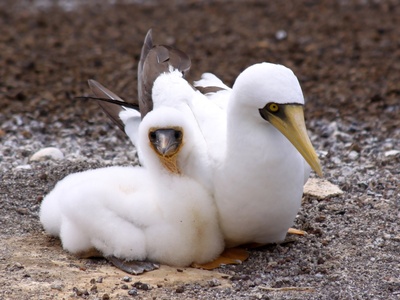
Masked Booby
Large white booby with black face and tail pattern; strong, direct flyer that dives for fish. Records in SVG are uncommon and mostly from offshore islets and pelagic sightings.
